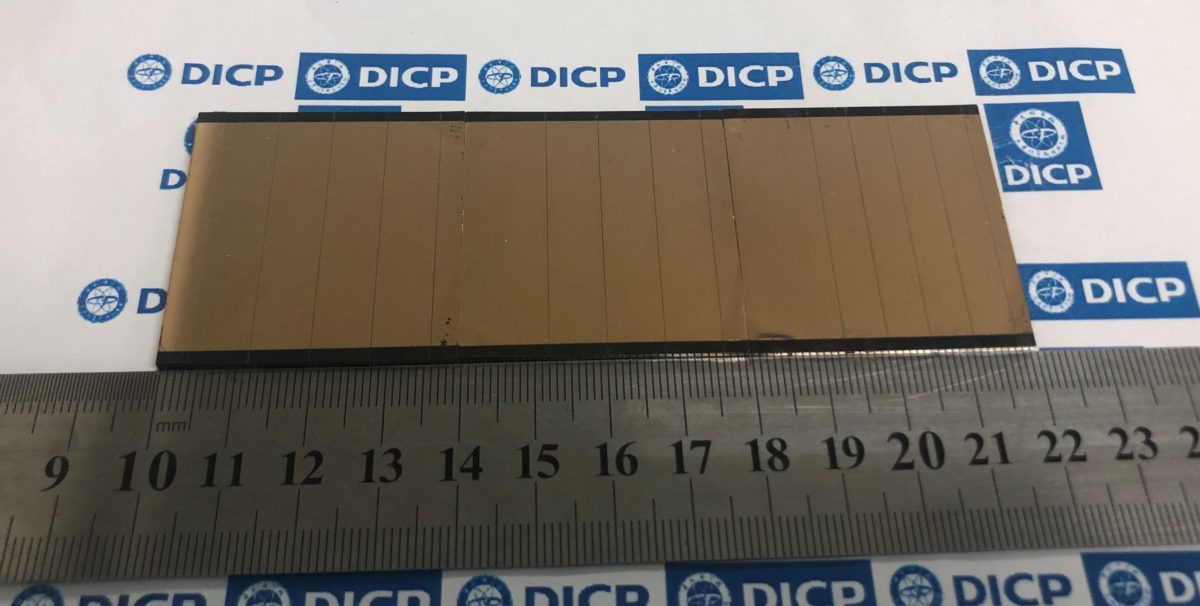Researchers in China have fabricated a perovskite solar cell with a novel defect passivation strategy based on the use of an ionic liquid (IL) perovskite capping layer.
ILs are non-molecular compounds that are composed solely of ions. They are claimed to have several advantages over traditional organic solvents, such as negligible vapor pressure at room temperature and high thermal stability.
The cell was built with a perovskite material known with the formula CH(NH2)2PbI3 (FAPbI3), which was treated with an IL known as 1-ethyl-3methylimidazolium bromide ([EMIM]Br). “The IL can stabilize the perovskite by forming strong chemical bonds with the soft perovskite
thin films that can largely impede the loss of perovskite components and suppress trap-state density in the grain boundaries and at the interfaces,” the scientists explained.
The device was built on a fluorine-doped tin oxide (FTO) substrate, a Tin(IV) oxide (SnO2) layer, the perovskite film, a spiro-OMeTAD hole-blocking layer, and a gold (Au) metal contact.
According to the scientists, the [EMIM]Br molecules on the perovskite surface are able to suppress the non-radiative recombination that mainly occurs at the perovskite defects that are passivated, thus improving charge carrier transport with reduced non-radiative recombination loss, which in turn leads to an increase of both open-circuit voltage and fill factor.
Popular content
The cell achieved a power conversion efficiency of 24.33%, an open-circuit voltage of 1.192V, and a fill factor of 80.67%. For comparison, a reference device with no [EMIM]Br-treatment reached an efficiency of 22.67%, an open-circuit voltage of 1.147V, and a fill factor of 78.49%.
With this cell technology, the academics also fabricated a mini perovskite solar module with an active area of 10.75cm. The panel achieved an efficiency of 20.33%, an open-circuit voltage of 5.97V, a short-circuit current of 47.76mA, and a fill factor of 76.67%. “Moreover, the bare device maintains over 90% of its initial efficiency after 700 hours of aging at 65 degrees Celsius,” they emphasized. “It also shows outstanding stability with only about 10% degradation after being exposed to the ambient environment for 1,000 hours.”
A full description of the solar cell can be found in the paper “Ionic-Liquid-Perovskite Capping Layer for Stable 24.33%-Efficient Solar Cell,” published in Advanced Energy Materials. The research team comprises scientists from China's Shaanxi Normal University and the Chinese Academy of Sciences.
This content is protected by copyright and may not be reused. If you want to cooperate with us and would like to reuse some of our content, please contact: editors@pv-magazine.com.



3 comments
By submitting this form you agree to pv magazine using your data for the purposes of publishing your comment.
Your personal data will only be disclosed or otherwise transmitted to third parties for the purposes of spam filtering or if this is necessary for technical maintenance of the website. Any other transfer to third parties will not take place unless this is justified on the basis of applicable data protection regulations or if pv magazine is legally obliged to do so.
You may revoke this consent at any time with effect for the future, in which case your personal data will be deleted immediately. Otherwise, your data will be deleted if pv magazine has processed your request or the purpose of data storage is fulfilled.
Further information on data privacy can be found in our Data Protection Policy.